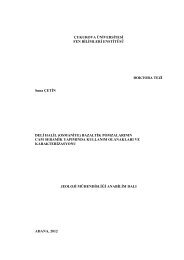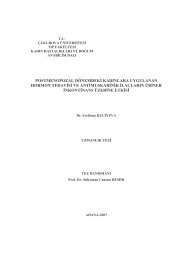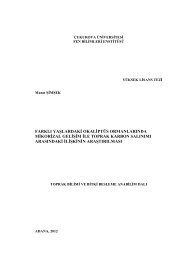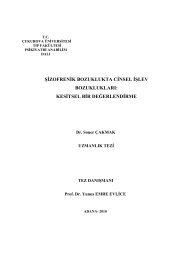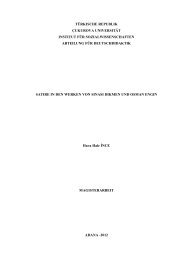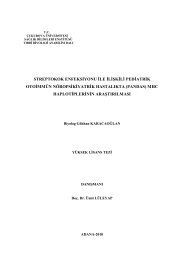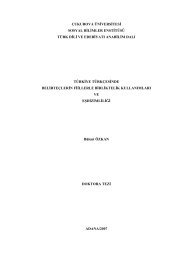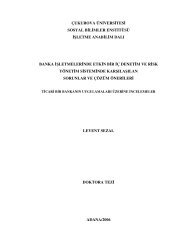ÇUKUROVA UNIVERSITY INSTITUTE OF NATURAL AND APPLIED ...
ÇUKUROVA UNIVERSITY INSTITUTE OF NATURAL AND APPLIED ...
ÇUKUROVA UNIVERSITY INSTITUTE OF NATURAL AND APPLIED ...
You also want an ePaper? Increase the reach of your titles
YUMPU automatically turns print PDFs into web optimized ePapers that Google loves.
3. FUNDAMENTALS <strong>OF</strong> DVR Mustafa İNCİ<br />
The basic principle behind the design of the filter is to provide a shunt path<br />
for the harmonic current and a series impedance to carry the harmonic voltages. To<br />
achieve this goal, the capacitor should be chosen to satisfy (Choi, et al., 2002):<br />
Z = K Z , K >> 1<br />
(3.13)<br />
Load ( m)<br />
f Cf ( m)<br />
f<br />
Where Z − j ( m C)<br />
(<br />
>> / ω andω 0<br />
= 2πf<br />
0,<br />
f0<br />
, represents the fundamental<br />
cf m)<br />
0<br />
frequency, and<br />
is the order of the lowest harmonics to be attenuated. From Figure<br />
3.10, let V<br />
inv(n)<br />
and V<br />
L(n)<br />
represent the respective nth order harmonic voltages on the<br />
inverter and load-side of the L-C filter and n=m,m+1,m+2,m+,,,,,M. M is the order of<br />
the highest harmonics to be attenuated. By using (3.13), we can obtain the following<br />
relationship:<br />
V = K V<br />
(3.14)<br />
load ( n)<br />
( n)<br />
inv(<br />
n)<br />
2<br />
Where = 1/ ( n ) LC 1)<br />
K n<br />
ω . Thus,<br />
( )<br />
0<br />
−<br />
1<br />
1+<br />
K(<br />
n)<br />
L = (3.15)<br />
2<br />
( nω<br />
) C<br />
0<br />
From (3.13), it is obvious that for a given<br />
Z<br />
load<br />
, C is directly proportional to<br />
K<br />
f<br />
. Thus, a suitable value for C can be obtained by the selection of an appropriate<br />
value for K . Furthermore, (3.14) means that, in order to reduce the nth order<br />
f<br />
harmonic voltage with rms value from V<br />
inv(n)<br />
to V<br />
load (n)<br />
, the inductor of the filter can<br />
be chosen according to (3.15) once the capacitor value C is given and K<br />
(n)<br />
is chosen<br />
according to (3.14). Indeed, it will be shown in the next section that the voltage<br />
30



